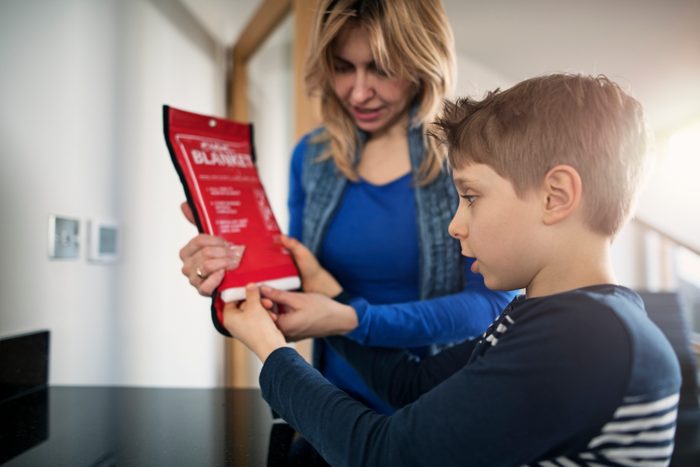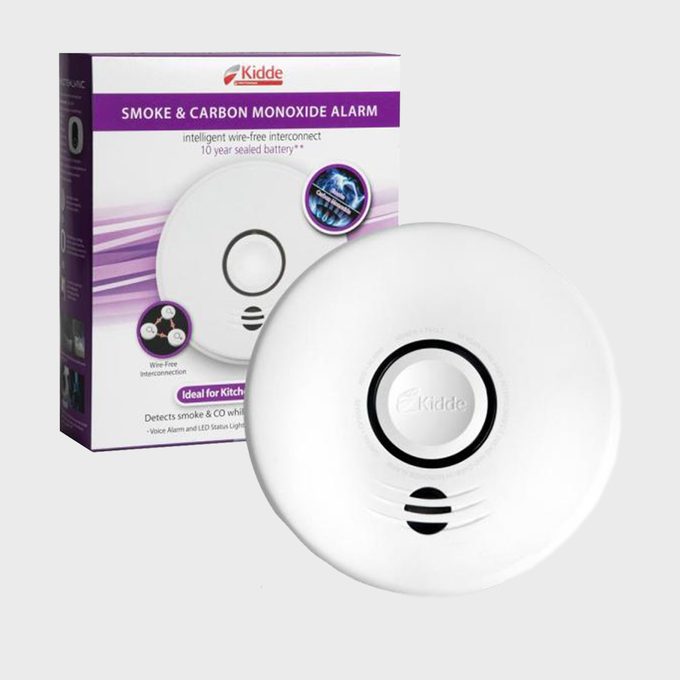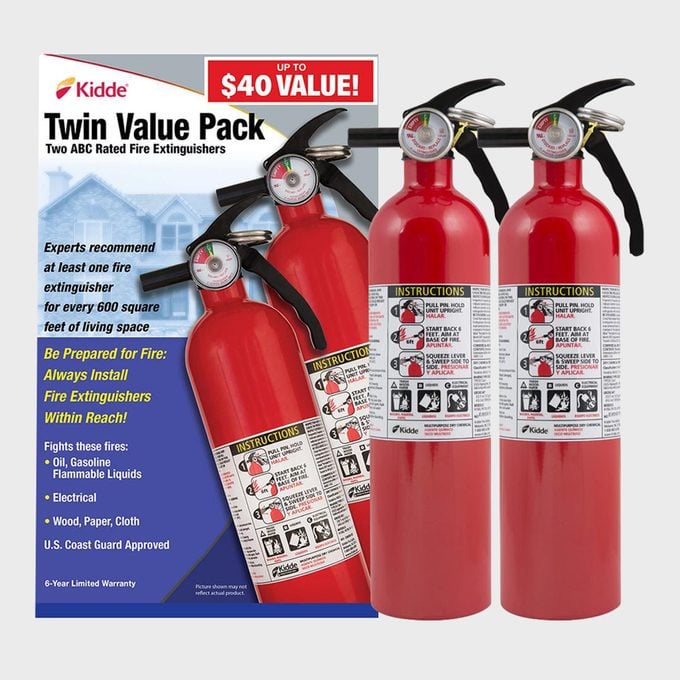Why 2024 is the Year You Need a Home Fire Escape Plan
Updated: Feb. 01, 2024

Having a fire escape plan is one of the most important things you can do for your family's safety, and it's easier than you think.
Our editors and experts handpick every product we feature. We may earn a commission from your purchases.
Sponsored by The Home Depot: This piece was created in partnership with The Home Depot, home to Kidde fire safety products that can help you protect your home and family with smoke alarms, carbon monoxide alarms and fire extinguishers.
Natural disaster fires are on the rise, and it’s something that concerns fire chiefs everywhere.
“Planning is the most important part of any fire escape plan,” says Christopher Feder, an assistant fire chief and fire prevention expert at the Penn Wynne-Overbrook Hills Fire Company in Wynnewood, Pennsylvania. “Everyone needs to know what is expected of them in the event of a fire, and the plan allows you to control chaos.”
Natural disasters and the fires they produce are a well-documented part of climate change, and Feder says homeowners need to prepare by formulating a detailed escape plan.
“If you fail to plan, you plan to fail,” he says. “Family and friends should be clear on their roles and responsibilities in the fire escape plan. This minimizes the guesswork and allows people to follow the steps with minimal direction. That means having everyone unhurt and well after an incident, which is the goal.”
Feder recommends the following easy-to-manage measures in a sound fire escape plan — especially important in 2022. Here’s how to do it in six easy steps. And pick up Kidde smoke detectors and fire extinguishers while they’re on sale.
On This Page
1. Gather The Family and Talk It Over.
“The start of any fire escape plan requires gathering everyone residing in the home to discuss the plan and the execution,” Feder says. This simple task keeps everyone on the same page if disaster strikes. It also helps dole out responsibilities like replacing smoke alarm batteries.
“All ideas and thoughts to keep everyone safe should be welcome in the final plan,” he says. “Survey the house together, including bedrooms and upper floors to define an escape route in the event of an emergency. Each room may have a different plan depending on the person, capabilities and access.”
2. Write down your plan and make it visible.
“Put the plan on paper clearly so everyone understands the steps, process and escape routes,” Feder says. “Emergency contacts and numbers should also be included on this sheet.”
Feder recommends making several copies of your plan to leave with neighbors and friends in case of a fire emergency. Include a hand drawn or computerized map of the home for first responders. It’s important to list any pets that may require rescue as well.
3. Run fire drills.
“Schedule a day to run through the plan as a drill,” Feder says. “This will ensure everyone is clear on their role. It also offers time to ask questions or clarify any directions and change up the plan if needed. Check out the Operation Edith program for more succinct ideas on this exit strategy along with fire prevention tips and tricks for the whole family.”
Family fire drills should be done at least annually, or whenever the plan is updated. “Changes may be needed to accommodate new family members, older children, shifts in the layout of the home and more,” Feder says.
4. Smoke alarms are essential.

“Smoke detectors are an essential part of any fire escape plan,” Feder says.
Whether you install hardwired or battery-operated smoke detectors, Feder says “a minimum of one smoke detector should be on each level and preferably in every bedroom as well. Placement should be within two feet of the door of the bedrooms and in the hallways of common areas on each level. Ideally, two-in-one smoke and carbon monoxide models are the most effective.”
Feder recommends stocking up on hardwired smoke detectors and essentials at Kidde flash sales and savings events. “And if you’re not choosing a model with a 10-year battery, make sure to change them biannually,” he says.
5. Keep fire extinguishers in the right rooms.

“If you do have an extinguisher in your home, do your homework on usage so it works as it should and follow manufacturer’s instructions,” Feder says. “Consider an extinguisher in the kitchen that is approved for kitchen use and also extinguishes grease and oil fires. Put another in an easily accessible area.”
The National Fire Protection Agency recommends a fire extinguisher on every floor. A good rule of thumb is that you shouldn’t have to travel more than 40 feet to access a fire extinguisher.
You can buy multi-packs of Kidde fire extinguishers inexpensively to leave them in appropriate locations. These address flammable liquids like oil, paper and wood products, electrical fires and cloth.
6. Your escape plan needs a ladder

Escape ladders come in different shapes and sizes. They should be easily stored and accessed. Escape ladders are single use, and need to be replaced after use.
“If you invest, make sure to practice using it safely from the first level of the house,” Feder says. “Check reviews on escape ladders to find the best fit for your family.” Ladders are essential for multi-story homes, so choose a model like this three-story fire escape ladder that can handle up to 1,000 pounds of load capacity and stretches to 25 feet long.